In Sone ki Chidiya, a poet tells a film actress why poor people go to the cinema: “For five annas’ worth of false dreams. And the glow of your beauty.”
On the surface, this may seem as cynical a comment on the Hindi film industry as Kaagaz ke Phool, but it isn’t, really. It’s a much more mainstream commercial film, with all the trappings of melodrama, dewy-eyed romance and oppressed heroine. I saw it because it stars one of my favourite actresses—Nutan—and one actor whom I’m very fond of: Balraj Sahni. And (this came as a surprise to me) the cast also includes someone whom I count among my favourite singers: Talat Mahmood.
Lakshmi (Nutan) is a poor orphan who’s being shunted around from one set of distant relatives to the other. The latest household on which she’s been foisted is a poverty-stricken one consisting of thoroughly nasty people, all disgruntled with their lot and not at all happy to have Lakshmi thrust on them. The mother of the household (Pratima Devi) nearly pushes Lakshmi out. The elder brother, his screechy wife and their children leave in a huff when Lakshmi arrives. The younger brother Balram ‘Ballu’ (actor?) is more interested in where his next bottle of liquor’s coming from than in Lakshmi.
The only person who treats Lakshmi kindly is the father of the house (actor?), who spends all his time dabbling in alchemy in the hope that someday he will be able to manufacture loads (lodes?) of gold and put an end to their financial problems.
Lakshmi has one other source of solace: the writings of a poet called Srikant (Balraj Sahni), whose book is very dear to Lakshmi. She sings his poems while going about her work, and gazes fondly at his picture on the inside of the book.
One day Ballu, who’s desperate for a drink, decides to make an easy buck by selling Lakshmi. He sends Lakshmi out in the evening on an errand, and arranges for the ‘customer’ to grab her on a dark street corner. Lakshmi, however, manages to escape from the man, and running for her life, blunders into a theatre. Her sudden entry onstage disrupts the play in progress, and to pacify the irate audience, the manager (who had heard Lakshmi singing a few days earlier) persuades her to sing onstage.
[Aside: How come in Hindi films—Bandish, Mujrim, Kismat, etc—people escaping from villains or the police always end up blundering into theatres? And more often than not, onstage?]
Lakshmi’s luck is exceptionally good; a film director (actor?) notices her and decides she must be his next heroine. He goes off to the producer (Dhumal, sporting a delightful Bambaiyya accent), who after some wheedling, gives in and offers Lakshmi a contract. The producer and director turn up at Lakshmi’s home with the offer, and her family—who’ve been busy clobbering her, under the impression that she’s been selling herself in the marketplace—lapse into a shocked silence.
It takes some time for the truth to sink in, but it does, and everybody including the villainous Ballu realises the truth: Lakshmi can be rich, and she can make them rich.
There is now a swift flash-forward, with brief scenes from various films in which Lakshmi stars (opposite Dev Anand, Ashok Kumar, etc), the awards she receives at the Filmfare functions, and further evidence of her growing popularity, fame, and—inevitably—wealth. (I couldn’t figure out if the scenes were from actual films Nutan acted in opposite these leading men, or if Dev Anand and Ashok Kumar just made very brief guest appearances in Sone ki Chidiya—they don’t even have dialogues).
Lakshmi’s ‘family’, of course, partakes wholeheartedly of this windfall. Ballu’s elder brother returns with wife and children; the old aunt who’d initially dumped Lakshmi on this lot also arrives, and all of them—except an increasingly distressed Lakshmi—settle down to a hedonistic existence in the mansion that Ballu’s bought out of Lakshmi’s earnings. The women buy vast quantities of jewellery and innumerable silk saris; the men spend Lakshmi’s money on the house, on cars, and on drink.
Ballu and his brother insist on accompanying Lakshmi on to the sets, and the family doesn’t even pass up the opportunity to barge into a photo session and have themselves shot. (Yes, somebody really should shoot these ghouls!)
The photo session, however, culminates in a piece of good fortune for Lakshmi. The journalist who’s come for the interview is a young man named Amar (Talat Mahmood), and he is quite obviously attracted to Lakshmi. He tries to shake off her persistent family and get her alone for a while, and finally manages to phone her at the studio.
From there onwards, the Amar-Lakshmi romance progresses speedily. Before we know it (and, more importantly, before Lakshmi’s limpet-like relatives know it), Amar is singing Pyaar par bas toh nahin hai and Lakshmi is simpering prettily.
Lakshmi, hearing Amar sing (and can he sing!), plus seeing his personable appearance, agrees to put in a word for him when he asks her if she can get him into the film industry as an actor. The producer isn’t initially happy at this proposal, but when the director says that Amar starring opposite Lakshmi might induce her to pay more attention to her work (she’s been running off from the sets on dates with her beloved), the producer agrees.
So Amar becomes an actor too, and everything is tickety-boo. That is, until it dawns on Ballu & Co. that their sone ki chidiya (literally, ‘golden bird’) is getting ready to fly off. If Lakshmi gets married to Amar and goes off, they’ll be left high and dry. They therefore try to tell her that Amar’s after her wealth. He doesn’t really love her.
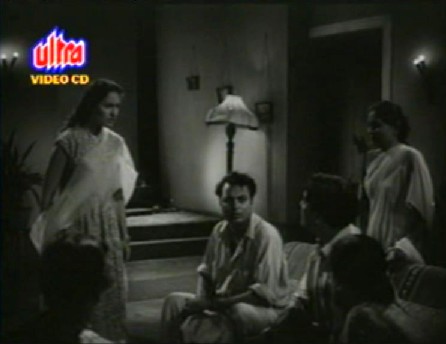
Lakshmi, though, is very sure of Amar’s love for her. She goes off to meet him and tells him everything, including of her boast to her family that Amar will marry her no matter what.
Amar is put off his stride a bit when he discovers that Lakshmi has no money, no jewellery, no anything to call her own. But—ha, ha (weak laugh here)—that doesn’t matter. She should go home and pack, and he’ll fetch a taxi and come for her. And that’s the last we see of Amar. He has, after all, three sisters whom he must get married off, with fat dowries for each: he can’t afford to marry a poor girl.
Poor Lakshmi sits up through the night, packed and waiting, running out into the road every time a car passes by or stops outside. When dawn comes, she’s still sitting, a broken and unhappy wreck now.
Pushed by Ballu, Lakshmi goes for the shoot the next day, but she can’t concentrate and has to leave the set in tears after repeatedly unsuccessful takes.
By nightfall, Lakshmi is at the end of her tether. Ballu has brutally informed her that one of the many papers he had got her to sign has contracted her out, for five years, to a film company that Ballu’s set up. And since the family’s run up many debts through their reckless splurging, Lakshmi will anyway have to work. Whether she wants to work or not, whether she’s even capable of it after the emotional trauma she’s going through—well, nobody’s really concerned about that.
Lakshmi, pushed to the brink, runs away to the seaside cliff and is getting ready to throw herself off when she is stopped by the singing of a man.
The words are so heartening that Lakshmi draws back, and is drawn inexorably towards the house from which the song is coming. She follows the song, and finally collapses and passes out at the base of the steps leading up to the house.
And guess who’s the singer? Lakshmi’s poet idol, Srikant! He discovers Lakshmi, takes her into his house, and puts her to bed—so that, when she wakes the next morning, whom should Lakshmi see asleep on the couch but Srikant himself? Suddenly life doesn’t look quite so dim.
Will this mean the end of sorrow and ceaseless pummeling from her greedy relatives? Will Lakshmi finally get to savour some happiness? Or does fate—cruel, dastardly fate—have more unpleasant surprises in store for our heroine?
What I liked about this film:
The music, by O P Nayyar. My favourite is Pyaar par bas toh nahin hai, but there are other songs too that are excellent—Raat bhar ka hai mehmaan andhera is probably among the best known.
What I didn’t like:
The character of the heroine, Lakshmi. She’s just too much of a wimp. Even granted that she’s a poor orphan, she can surely show a little spine? Especially when she becomes the sole breadwinner of the family? But no; even rich and successful though she is, Lakshmi continues to let her relatives ride roughshod over her. Grrrr.
Talat Mahmood. No, I’m not cribbing about his being in the film; I’m cribbing about why he had such a brief role. I really wanted to see more of Talat here!
Be warned: Sone ki Chidiya is irritating in places, mainly because of its heroine’s irreparable tendency to be weak-kneed. But the pace is good, the story simple and not bad (and the premise—of a girl being jilted by one man and then falling in love with another—an unusual one for the 50’s). There’s even a little bit of insight into the ugly underbelly of the Hindi film industry, and a comment on the utter materialism of people, whether they’re Lakshmi’s money-grubbing relatives, or Amar.

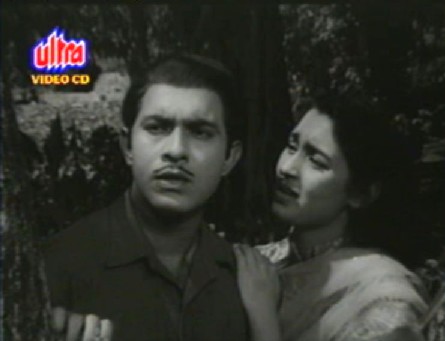


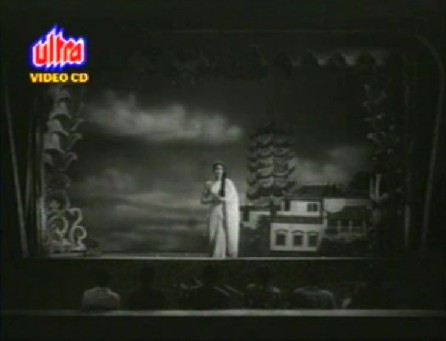
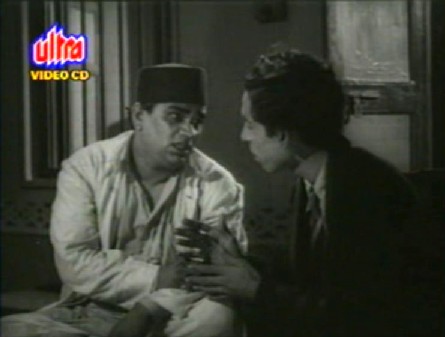
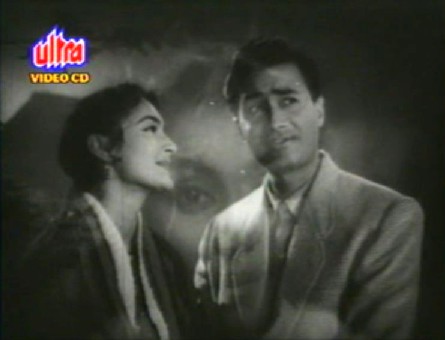

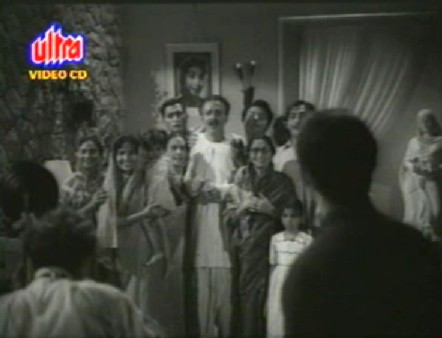
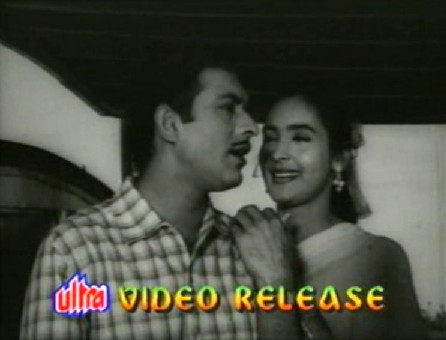
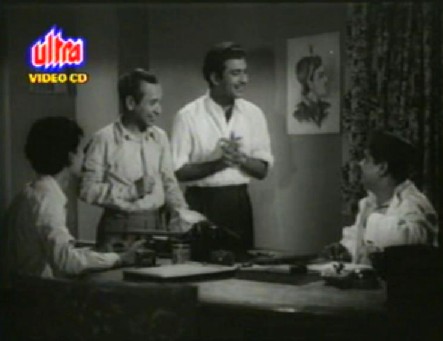
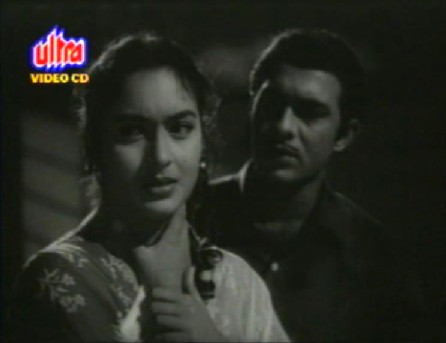


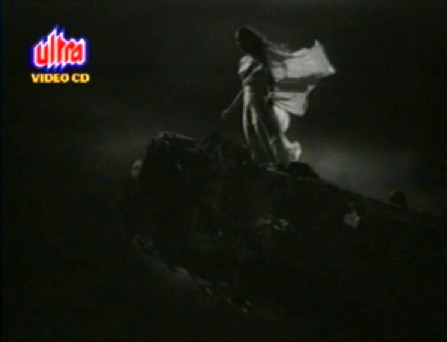
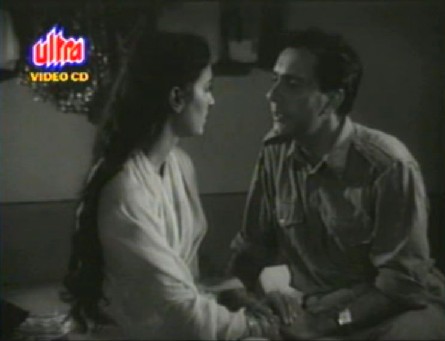
I always wanted to know more about this movie. The reason is because somebody told me and I read it somewhere else as well, that the film is loosely based on Shobana Samarth exploiting her daughter, Nutan, which I don’t believe.
BTW, what convinced Talat Mehmood to play such a negative role?
Balraj Sahni *sigh*
“The character of the heroine, Lakshmi. She’s just too much of a wimp. Even granted that she’s a poor orphan, she can surely show a little spine?”
Remember Bertie Wooster and Aunt Agatha? I think it is the same syndrome. ;-)
Only apna hindi films are more dramatical!
But Nutan is usual, it seems, good to look at. What irritates me about Nutan, who otherwise is always balm for the eyes and the ears and all senses, is her screechy voice, when she shouts. But you can’t have everything in one person, right?
LikeLike
I didn’t know about Shobhna Samarth exploiting Nutan – that’s interesting!
Haha about Bertie and Aunt Agatha ;-)). But that was funny… this is plain nasty, and the way Ballu especially treats Lakshmi is not at all nice. He’s a brute, out and out.
I do wish Talat Mahmood hadn’t been the one chosen to play Amar. Amar’s not a thoroughly bad character (they try and vindicate him somewhat by showing us a glimpse of how pressed he is, too, because of his three sisters and him being the only breadwinner), but yes, it is a negative role. I do want to see some of his other films, the ones in which he was the hero. The only other one I’ve seen (on DD, years ago) was Dil-e-Naadaan, with Shyama. Lovely music, but terribly depressing – or what I recall of it!
Have you ever heard a Hindi film actress who sounded good when she shrieked? ;-) Here are two examples to help you get over Nutan: Saira Banu and Asha Parekh. Hard to beat them!
LikeLike
No, I don’t think her mother was exploiting her. But they had some misunderstanding about some tax returns or something, because of which Nutan (acccording to my aunt: on the instigation by her husband) registered a case against her. They weren’t talking for years because of that. 2-3 years before Nutans death they had a reconcilitation. Nutan allegedly presented Shobana Samarth with a copy of Bhagvad Git, which was a gift from her father. I think Nutan had never forgiven her mother for leaving her husband for Motilal.
So, Talat Mehmood had a hang for depressive roles, eh?
Thanks for the antidote! ;-)
LikeLike
I have seen this film. It was okay. I didnt know Amar was Talat. Wow ! and whatta song he sang… sigh.
LikeLike
harvey: Goodness, I never knew all that… but yes, I can imagine that Nutan wouldn’t have been too happy about Ms Samarth leaving her husband for Motilal (who was her husband, though?)
Ava: Yup, Amar was Talat. Beautiful, na? There are some great pictures of him over at the site his son Khalid has dedicated to him; check out the films page: http://www.talatmahmood.net/the_star.htm
LikeLike
This film has long been on my to-rewatch list. I saw it years ago and remember liking it a lot – lovely cast, great songs, and a nice Cinderella tale.
“[Lakshmi]’s just too much of a wimp.” Could she be suffering from battered woman syndrome? ;-) Just be thankful it wasnt a 40s film. If it were, the woman would not only be suffering, she’d actually worship her tormentors and lecture anybody who tried to deliver her from her own personal hell!
LikeLike
Shobana Samarth nee Shilotri was married to Kumarsen Samarth (director and cinematographer). Young Shobana was very keen to become an actress, in which she was encouraged by Durga Khote. The Shilotris were very much against it. They sort of relented and said she can pursue her acting profession if her future husband allows it.
Kumarsen supported her ambition. She went on to become the most famous Sita (Ram Rajya), though she was not very proud of it. I remember an interview of hers on DD, where the interviewer was going ga ga over her role as Sita in Ram Rajya and she ticked him off by saying that she didn’t have much to do there except standing around and acting coy. She had roles in other films, which unfortunately were flops.
@ bollyviewer: I agree with your battered woman syndrome. I was referring to that when I mentioned the Bertie-Aunt Agatha roles, though in a lighter vein. One can find such films, like you mentioned, not only in the 40s but in the 60s as well. Pick up any Meena Kumari film of the 60s.
LikeLike
The snapshot of Dev Anand and Nutan seems to be from their movie “Baarish” which released in 1957.
I liked this movie well enough, but I had the same issues with it that you did. And I can’t believe I’m saying this, but I was also rather disappointed by Nutan’s performance. She’s quite hammy in the film and almost destroyed the climax for me(thank God for Balraj Sahini’s restrained acting).:-(
Btw, have you seen 1949 film, “The Heiress” starring Olivia de Havilland and Montgomery Clift? It has a scene very similar to the, Laskshmi-waiting-in vain-all-night-for-Amar, one from SKC.
LikeLike
bollyviewer, harvey: Yes, I tend to think it’s probably the ‘battered woman’ syndrome too… there’s one scene where Amar asks her why she’s so scared of everybody, and she does look puzzled and then say “Yes – I don’t know; I think I’ve just got used to being scared of everybody.” or words to that effect.
And yes, Meena Kumari excelled in the ‘battered woman’ roles, didn’t she? Especially battered women who worshipped their tormentors, as bollyviewer puts it so aptly! Ugh.
harvey: Thank you for that brief history of Shobhna Samarth’s career! I think Greta reviewed Ram Rajya – I seem to recall seeing screen caps of Shobhna Samarth as a young woman. All the other films I’ve seen her in have her as a mother…
Shalini: Yes, I thought it was either Baarish or Manzil – one of the two. Perhaps Manzil, actually, since Nutan looks a little more ‘urban’ – shawl etc. In Baarish she’s more of a gaon ki gori :-).
Ah yes, I did think that waiting-all-night scene reminded me of something! Definitely The Heiress (though, thankfully, Sone ki Chidiya has a happier ending).
LikeLike
This sounds nice (I love Cinderella stories, and can tolerate a wimpy heroine as long as she isn’t actually worshipping her oppressors). I don’t know if I could tolerate the garish Ultra logo (maybe a subtitled dvd will be more restrained? or maybe not)…
I srsly don’t understand why Talat didn’t make it as an actor. He was so handsome, could sing, and wanted to be one (I think)…and he could act as well as anybody.
LikeLike
I’ve checked induna, and they have a Moser Baer DVD – which, from experience, I’d say is probably likely to be somewhat better than Ultra. Yeah, the Moser Baer logo’s pretty intrusive too, but not as garish and in-your-face as Ultra!
I can’t figure out why Talat didn’t get to the top – or anywhere close to it. If people like Bharat Bhushan or Biswajeet could make it, why not Talat? And that voice… ohhh.
LikeLike
This sounds good – Lakshmi, though wimpy is definitely better than other typical battered women who worshipped their tormentors.
The snapshot of Dev Anand and Nutan must be from Manzil coz they both look too well dressed for it to be from Baarish.
How I wish Talat had made it big as an actor too. THis movie has some lovely songs.
Bewafa starring Nargis, Ashok Kumar and Raj Kapoor has almost the same scene like Laskshmi-waiting-in vain-all-night-for-Amar.
LikeLike
Thank you for reminding me of Bewafa! I’ve been meaning to watch it ever since I read your review of it (and how rare it is to find a Raj Kapoor film that isn’t terribly depressing!). Today, finally, I’ve put it on my DVD rental queue. Am looking forward to watching it! :-)
LikeLike
For Talat in a hero role, I recommend “Lala Rukh.” Not only are the songs divine, but the movie is a fun watch and Talat saab looks hot!:-D
LikeLike
If the song is anything to go by, he certainly does look hot!! :-)
And Shyama, too? And that too in a film that seems pretty romantic (she was there in Dil-e-Naadaan too, but in a very negative role). This I’ve got to see. Thank you for the recommendation!
LikeLike
Ever since I read about Thomas Moore’s Lalla Rookh and realised from the song that there was a Hindi film with the same name, I’ve wanted to watch it!
Shalini, does the film tell the same story as Moore’s poem? In the book, Aurangzeb’s daughter, Princess Lalla Rookh journeys to Kashmir, to marry the young King of Bucharia whom she has never met. On the way, she falls for a handsome young man, who, after their adventures together, turns out to be her betrothed! If yes, I need to find this film!!!!
LikeLike
My goodness, if that is the story of the film, then I need to see this even sooner than I’d imagined! It sounds wonderful!
LikeLike
Bollyviewer – yes, that is the plot of the movie. Shyama is the heroine/princess and Talat saab the hero/prince. I have the VHS tape of the movie, but I believe it is now out on VCD.
LikeLike
And all this while I was under the impression it was a film about Indian history. LOL!
The story is interesting (I too like Cinderella stories).
But what I *must* have is Lala Rukh. :-)
LikeLike
Thank you, Shalini! I had a look around and it seems to be available on linuxbazar… have never bought anything from them, but let’s see.
pacifist: Me too! Sounds just the sort of thing to help one get over disappointments like Rail ka Dibba. Now, if only it isn’t a Friends VCD!
LikeLike
hi there,
i’m sorry my comment is a little off-topic. couldn’t find your email id anywhere, so i figured this was the only way to reach you.
i’ve been tasked with a tiny little art project – to redo the cover of TEC. and i was hoping you could help me with some research or images of artefacts from that era. i’d appreciate it if you could share some trivia regarding the accounting practices or even the investigating tactics of the mughal era.
because there’s really not much that i’ve been able to dig up online.
thanks
kedar
LikeLike
Hi Kedar, thanks for writing in – and I’ll be sending you a mail later today with whatever I can provide.
Thanks!
LikeLike
Linuxbazaar usually lists a lot of films that they dont always have in stock! And their customer service is such that you will never get to know whether they have it or not, until a month or two after you’ve placed the order – at least thats been my experience here. Maybe they’re better in India. If you are able to get it from them, do let me know. I dont mind waiting a few months for it, so long as I get the film, finally!
LikeLike
I’ve had a similar experience with webmallindia. I was exultant when I discovered a bunch of really obscure films that I wanted. Registered, bought them, paid up for them – and then got a notification that they weren’t available and the amount would be credited. Ugh!
How difficult is it to put a ‘Not available’ note against an item in a listing?
Lala Rukh is available from the Talat Mahmood site (www.talatmahmood.net) for Rs 990. Steep, huh?
LikeLike
Rs. 990 is certainly steep, but for deliveries outside India they want US$65 – thats not steep, its extortion!
LikeLike
Goodness, I never saw that – yes, daylight robbery. I like Talat Mahmood a lot, and I’d love to see Lala Rukh, but not that much. I’ll wait till induna gets it. Or someone!
LikeLike
This sounds like an interesting movie, i’ll be willing to watch this. I have noticed as per the observation of women in hindi films in the 50’s while the main heroine might have been lacking in spine the vamp was always extra bitchy and weren’t to be messed with, its like the writers gave the vamps double the spine, hers and the heroines
LikeLike
Welcome back, bollywooddeewana! I’ve been missing you. :-)
And yes, that’s an observation I’d agree with – vamps always tended to be extra nasty in films from the 50’s, while the heroines were often so wimpy you wanted to hit them. Sone ki Chidiya didn’t have a vamp, so the wimpy heroine jarred even more!
LikeLike
Pingback: Ten of my favourite Talat Mahmood songs «
Talat Mehmood has sung many songs and most of them became popular in their time. To choose ten best sung by him is a difficult task. I think a singer should be known not just by his most popular songs, but also by his lesser known ones. For instance, there are two songs of Talat Mahmood which are now a collector’s items and which are almost never heard on the radio. The first one is from the 1951 film ‘Nazneen’, ‘Tera khyal dil to sataaye to kya karen…’ and the other from the 1952 film ‘Farmaish’, ‘Mohabat ki hum chot khaye hue hai, kisi bewafa ke sataaye hue hain…’ Just listen to these songs. These will grow on you when you have to listened to them three or four times.
LikeLike
I will certainly look out for those songs, thank you for the recommendations.
Just one clarification, though: I never said that list was of Talat’s ten best songs – just that they were ten ‘of my favourite songs’. This implies that they are the songs I like best. In any case, as they say, beauty lies in the eye of the beholder – which can be extended to ‘good music lies in the ears of the listener’! What I think of as a wonderful song may not be even worth listening to for another. So, to classify a ‘ten best’ for any singer, MD, etc, would be pointless – because it’s highly probable that no two people’s ‘ten best’ songs list would coincide. One can only say that these are my favourites…
LikeLike
Thank you dustedoff for distinguishing between ‘ten best songs of Talat Mahmood’ and ‘ten of your favourite Talat Mahmood songs’. There is no disputing the fact that tastes differ from person to person. I too have my favourite songs of Talat Mahmood. But all of these are not film songs. Two of his non-film songs, ‘Tasveer teri dil mera behla na sake gi…’ and ‘ai andleeb-e-zaar jaane ko hai bahar, tu kyon hai bekrar bata kyon hai bekrar…’ are my perennial favourite. His ‘Meri yaad mein tum na ansoo bahana…’ from ‘Madhosh’ is so sweet that one never tires of listening to it. Talat’s duet with Geeta Dutt, ‘Armaan bhare dil ki lagan tere liye hai…’ in ‘Jaan Pehchaan’ is a charmer. It was picturised on Raj Kapoor and Nargis. There is something about that ‘Taxi Driver’ number, ‘Jayen jayen to jayen kahan’ that pulls at one’s heartstrings. There are a few more. But I can’t go on and on here, lest it should become a little too boring for those who are not interested in my choice of Talat Mahmood songs.
LikeLike
Thank you – you’ve mentioned some Talat Mahmood songs that I hadn’t heard of before (Ae andaleeb-e-zaar was one – I must look out for it). I have heard (and liked) Tasveer teri dil mera behla na sakegi. Beautiful song. Even other than my ten favourite songs which I’ve listed above, there are many others that I think are absolutely wonderful – for instance, this one which is a gem, and which I cannot even think about without getting gooseflesh:
LikeLike
Dustedoff, thanks for mentioning a song of Talat Mahmood which is my perennial favourite. But this reminded of Khayyam who was the music director of this film. ‘Footpath’ was the first film with which he started using his real name as music director. Prior to this he had scored music, in collaboration with Aziz Hindi, for a few films, none of which is remembered today. This duo scored music for films under the nom de plume Sharmaji-Vermaji.
The Sharma of this team was of course Khayyam. and Aziz Hindi its Vermaji. Aziz Hindi was also a small-time singer. He sang a few songs for films of the 40s. In fact, Khayyam himself had started with the ambition of becoming a playback singer.
Khayyam’s mentors were music directors Husnlal-Bhagatram. He learnt music from them. He sang a duet with Zohrabai Ambalawali for the film, ‘Romeo And Juliet’. The Romeo of this film was actor Sapru and the Juliet was Nargis. The music directors of this film were Husnlal.Bhagatram.
But Khayyam could never make headway as singer, so he devoted his energies to mastering the rudiments of composing music for films. And he was successful.
LikeLike
That is very interesting! I had never even heard of Aziz Hindi, or of the Sharmaji-Vermaji duo. Thank you for increasing my knowledge.
I’ve only seen two films yet of which the music was composed by Husnlal Bhagatram – Afsana and Shama Parwana (I really liked the songs of Shama Parwana a lot; they were wonderful.
When it comes to Khayyam… well, he was in a class by himself. The music of films like Phir Subah Hogi, Shagoon and Umrao Jaan is fabulous. I haven’t been able to find the Khayyam song from Romeo and Juliet, but I’m glad he eventually devoted himself to composing music!
LikeLike
It is interesting to know that you liked the songs composed by Husnlal-Bhagatram for films like Afsana, Shama Parwana. In fact, Suraiya’s best-sung songs were composed by these two brothers.
But here I want to tell you an interesting thing.
Husnlal of the Husnlal-Bhagatram duo was romantically inclined towards Lata Mangeshkar but she was at that time emotionally involved with music director-singer C Ramchandra. So, Husnlal’s was an abortive attempt at wooing Lata.
Husnlal was a classically-trained singer but he did not sing for films for which he composed the music, nor for other music directors. But he made one exception. In ‘Pyar Ki Manzil’ (1950) starring Rehman, Munawar Sultana and Kamal, he sang a duet with Lata Mangeshkar, ‘Ai chaand zara sun le chhota sa fasana hai, kuch hum bhi diwane hain kuch dil bhi diwana hai…’ Written by Shevan Rizvi, It was a beautifully composed song by the Husnlal-Bhagatram duo, but somehow it never got popularity.
Husnlal-Bhagatram scored music for a number of films. I have listened to their songs with great enjoyment. But there is one song which I feel sends a thrill down my spine. It is from the film ‘Farmaish’ (1952). The song was, “Aap ne chheen liya dil ise kya kehte hain, Aji sahib ise dil wale ada kehte hain…’ It is a duet and it was sung by Mohamad Rafi and Meena Mangeshkar. Meena Mangeshkar has sung very few songs. But this one is indeed a charmer. Do listen to it if you can get it.
LikeLike
You are increasing my knowledge by leaps and bounds! Thank you for that interesting bit of gossip about Lata and Husnlal – didn’t know it. ;-)
I managed to find a (only audio – and very scratchy) upload of Aap ne chheen liya dil ise kya kehte hain:
I must admit to never having come across Meena Mangeshkar’s singing earlier. Though I looked at her filmography on IMDB, it does not mention Farmaish, but instead does mention Duniya mein hum aaye hain from Mother India – which I thought had been sung by Lata. So there’s obviously something wrong there – in the omission of Farmaish, and/or the inclusion of Mother India…
LikeLike
I recently came across a Talat Mahmood song that I now dimly remember I used to croon in my childhood days. It is a sad song from a little known film entitled ‘Gunah’ directed by Kidar Sharma. The song, ‘Mere khyalon mein aakar galle laga ja mujhe, ke aaaj phir mera jee chahta hai rone ko…’ The film starred Geeta Bali and Jagdev. Its music was composed by Snehl. Both the lyrics and Talat Mahmood’s melancholic voice hold one spellbound.
Dustedoff, please do listen to it. Its video clip is available on Youtube.
LikeLike
It is indeed a lovely song.
Here’s the clip. Not very good quality sound though.
LikeLike
I hadn’t heard of this song before, but yes, it’s a beautiful one – both the lyrics as well as Talat’s rendition. Thank you.
And thank you, pacifist, for finding the link and putting it in!
LikeLike
Dustedoff, ever listened to Talat Mahmood’s earliest songs when he began his career as singer in Calcutta? At that time he also made cameo appearances in some films. In those days he sang some Hindi and Bengali songs under the assumed name Tapan Kumar. One of these heart-warming songs was, ‘Soye hue hain chaand aur taare, raat bhi hai andhiyari, tum baithi ho paas hamare …’ and ‘Sab din ek saman nahin tha…’ These songs relate to the time when Talat was still in his late teens. An ardent admirer of Saigal, he says he was present in the studio when ‘Do naina matwale tihare hum par zulm karen’ was recorded by Pankaj Mullick.
LikeLike
Talat was present when Do naina matwaale was recorded? Wah. I’m very impressed – that is one song I like very much.
Thank you for the two songs you recommended (I couldn’t find the second one, though). I knew that Talat used to sing in Bengali under the name Tapan Kumar (Raunak, who also reads this blog, mentioned that it was while working in Calcutta that Talat first met Lotika, who went on to become his wife).
For others who’d like to listen:
Soye hue hain chaand aur taare:
LikeLike
Talat Mahmood was soft-spoken and unassuming. It is said that the song, ‘Jalte hain jis ke liye…’ was originally intended by S.D.Burman to be recorded in the voice of Rafi, but owing to some reasons Rafi could not come for recording on the scheduled date. So, somewhat reluctantly, S.D.Burman asked Talat to sing it. Years later, Talat Mahmood, while presenting a Jaimala programme on Vivid Bharti, disclosed that when this song was about to be recorded, Dada warned him to be careful. Talat said that Dada was about two decades older than him, so he always respected him. He did not mind Dada’s tantrums when he had to record some song with him.
But ‘Jalte hain jis ke liye’ in the voice of Talat turned out to be such a charmer that even dyed-in-the-wool Rafi fans would agree that if their icon had sung it, he could not have improved upon it.
LikeLike
I hadn’t known that back story to Jalte hain jiske liye. And though I am a Rafi fan (but, let me elucidate: I am not a blinkered fan of any singer! Rafi or not)… I cannot associate the song with anyone other than Talat. He does supreme justice to it, makes it simply, hauntingly, beautiful.
LikeLike
Hello Madhu,
I was reminded that you had reviewed this one, and as I had bought it some time back, and that my copy (Moser baer) doesn’t have subtitles, I wonder whether you had watched it with or without subtitles, I’ve checked YouTube, it’s uploaded there, but without ST. So if you had a clue as to where I could watch it with them, it would be great!!
Thanks,
yves
LikeLike
Hello Yves,
I watched Sone ki Chidiya on a VCD, so it didn’t have subtitles. I’ve tried doing some searching online for subtitles, but unfortunately, they don’t seem to be available anywhere. I’m sorry – I wish I could’ve helped. :-(
LikeLike
Curiously you didnt mention Balraj Sahni’s very handsome self too much. Moverover there are some pretty intimate scenes featuring Nutan and Sahni to suggest their bond that you’ve not brought up. For example, when both are lyig on the beach, all wet, and pretty close to each other writing on the sand and getting pretty touchy feely for a 50s movie. Another is when Nutan is trying to convince him to write for movies, when she buttons up his shirt lovingly. I was surprized-I thought such intimacy would be unheard of in those days. I’m starting to feel that the directors in the 40s and 50s were much more realistic in how romance and intimacy should be portrayed-they weren’t prudish to the same degree as today’s directors who go all out promoting smooches in their movies in the name of realism…And Sahni and Nutan has pretty crackling chemistry in this movie and in Seema…Great fun to watch just for that!
LikeLike
Nothing curious at all about me not mentioning Balraj Sahni’s ‘very handsome self’. ;-) – because, while I like him a lot because of his dignity and his exceptionally good acting, I’m only about okay as far as his looks are concerned. Certainly not plain-looking, but not awesome, either. Beauty lies in the eye of the beholder…
To be honest, I didn’t actually notice the chemistry very much. Perhaps it was cut out of the VCD I saw (it’s been a while now, so I don’t remember). Or, of course, from what you describe, it’s very possible that it never struck me as something extraordinarily intimate. I’ve seen a lot of films from the 50s, and a few from the 40s, which would seem pretty daring from the point of view of somebody who might have grown up on 70s and 80s Hindi films, where two nodding flowers said it all.
Seema is another good film – in fact, I like that much better than this one.
LikeLike
A.C. Tuli
I wonder how a few scenes between Balraj Sahni and Nutan in ‘Sone Ki Chidya’ can be called a trifle too intimate, considering that this film was released in the supposedly conservative 50s. There are many films that came before ‘Sone Ki Chidya’ which had far more ‘hot’ scenes in them. Take, for instance, “Áwara” which came in 1951. It had many scenes in it in which Raj Kapoor and Nargis are seen hugging each other passionately. Then, there were bathing scenes in this film which were something in the nature of a shocker for the cine-goers of those days. In ‘Buzdil’ (1951), Nimmi and Premnath embraced several times. There are many other such films in which the hero and heroine were seen in each others’ arms.
LikeLike
The little girl in slide number eight is Mumtaz. ‘Sone Ki Chidya’ was her first movie.
LikeLike
Wow, I had no idea. Thank you for that!
LikeLike
Sorry, I had the wrong girl. But here is mumtaz with Nutan in a song from Sone Ki Chidya. You will find her easily. http://www.youtube.com/watch?v=AvqgOhs5zcM
LikeLike
Oh, yes! And she’s right up there, at the beginning of the song. Such a pretty child even then – she must have been only ten or so.
Thank you for that. :-)
LikeLike
Sach bata tu mujpe fida….so effervescent and haunting…can’t get it out of my mind
LikeLike
Yes, a delightful song.
LikeLike
I read somewhere (https://www.dailyo.in/arts/ismat-chughtai-urdu-literature-short-stories-lihaaf/story/1/18952.html) that Ismat Chughtai based the story (Sone ki Chidiya) on Nargis’ life and that many people in the industry were really upset with her and her husband, Shaheed Latif, who had directed the film. They apparently struggled to get work thereafter. Interestingly, Shaheed Latif’s filmography indicates that the next 2 films he worked on were Picnic and Bahaarein Phir Bhi Aayeingi. Both those films incidentally were supposed to feature Guru Dutt, who apparently wanted to help Shaheed Latif.
LikeLike
I didn’t know the movie was based on Nargis’s life in particular, though I do seem to recall hearing that it was based on a real actress’s life.
Picnic was the one starring Sadhana opposite Guru Dutt, wasn’t it? I’ve seen a song from that, pity it never got completed.
LikeLike
Yes, I’ve seen the song on YouTube. I checked IMDb and I think the final version had Manoj Kumar in it. On a different note, have you come across Ismat Chughtai’s A Very Strange Man? It’s a fictionalised version of the Guru-Dutt-Geeta Dutt-Waheeda Rehman- story. I was looking up references to the book when I read about Sone ki Chidiya and read more about the film on your blog.
LikeLike
I’ve heard of the Manoj Kumar Picnic, even heard some songs from it, though I’ve never seen it. I hadn’t realized it was a version of this very same film – I thought it was an altogether different film the name of which was snapped up because this one got shelved. Now I’m curious about that…
No, haven’t read the book you mention. In fact, the only Ismat Chughtai writing I’ve read so far is Lihaaf. I do want to read more, though.
LikeLike
You know, you’re right. The two Picnics might be unrelated. I just saw the name Shahid Lateef and assumed it must be the same. I have no clue who was meant to have directed Guru Duty and Sadhana.
A very Strange Man / Ajeeb Admi seems to be full of references to the Hindi film world, actors, directors, etc. I’m curious about Chughtai’s observations and accounts…let’s see. Meanwhile, there’s Sone ki Chidiya to watch. Really appreciate blogs such yours.
LikeLike
Hmm. Now I’m really curious. Considering Sadhana was still around (and very popular too), I would have thought – as happened in other films that had to be partly remade, like Pathan or Love and God, that she would have been retained even if Guru Dutt was no more. On the other hand, maybe Shahid Lateef just liked the title. I guess we’ll never know – unless somebody knows what the story of the original Picnic was all about!
Thank you for appreciating my blog! I’m really grateful. :-)
LikeLike